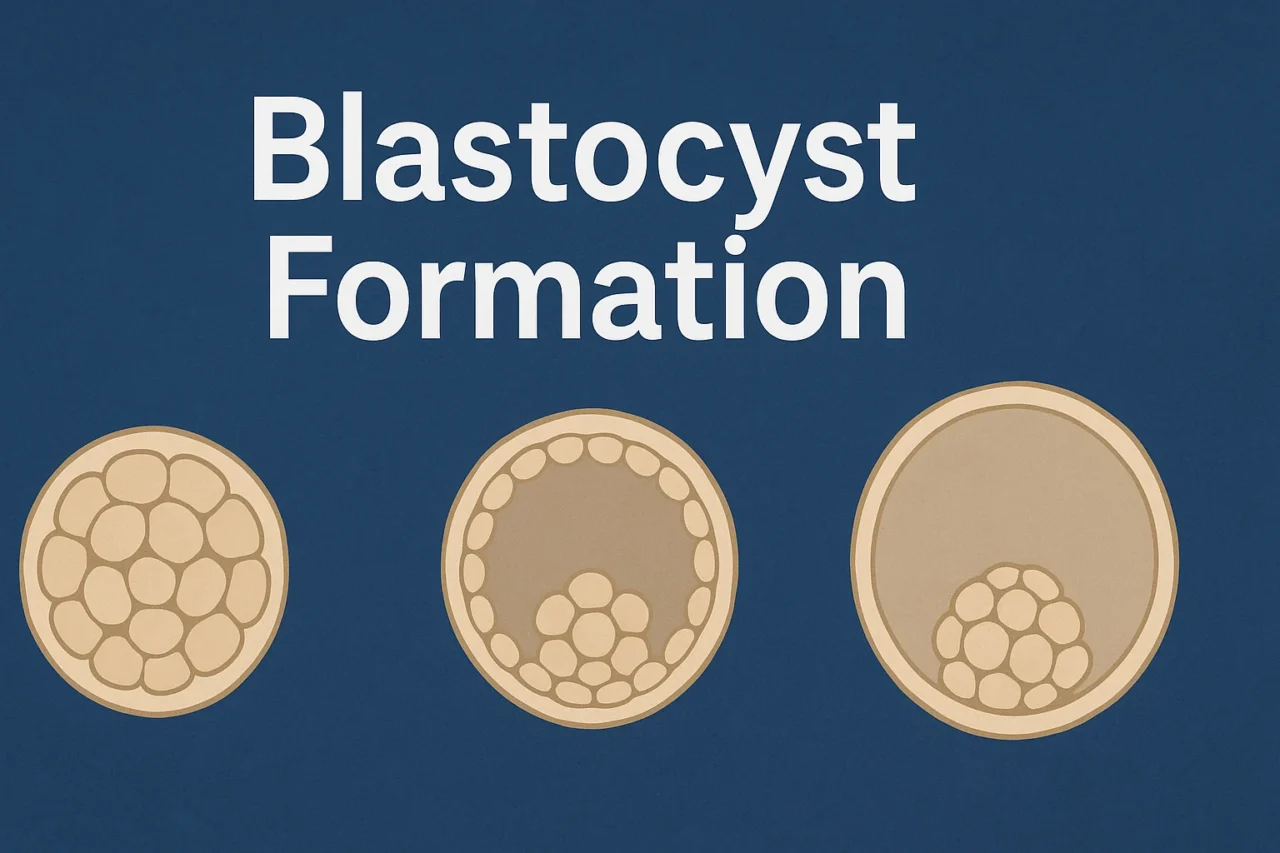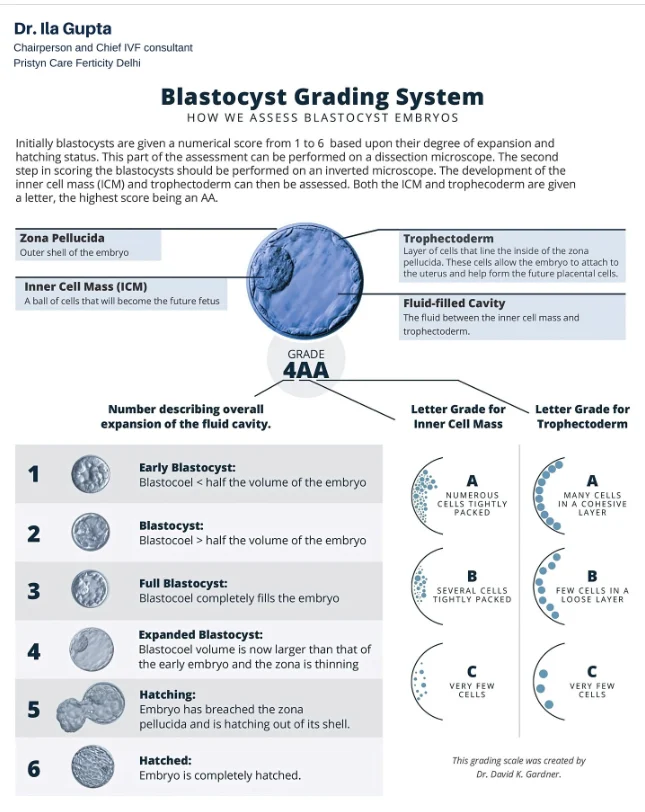
Rahul Manoj/LinkedIn
Oct 8, 2025, 11:51
Rahul Manoj: Blastocyst Formation – The Beginning of Cellular Specialization
Rahul Manoj, Senior Embryologist at Best Life Fertility Center, shared a post on LinkedIn:
“Day 10
Blastocyst Formation: The Beginning of Cellular Specialization
By Day 5–6 post-fertilization, the compact morula transforms into a blastocyst, characterized by fluid accumulation and distinct cellular differentiation — a critical step for implantation competence.
Key Structural Components:
- Trophectoderm (TE): Outer epithelial layer that later forms the placenta and other extraembryonic tissues.
- Inner Cell Mass (ICM): Cluster of inner cells destined to form the fetus.
- Blastocoel: Fluid-filled cavity formed by active ion transport and water influx.
Blastocyst Expansion and Grading:
- Early Blastocyst: Small blastocoel, partial ICM/TE distinction.
- Expanded Blastocyst: Large blastocoel, thinning zona pellucida.
- Hatching Blastocyst: Zona ruptures and the embryo prepares for implantation.
- Grading (Gardner System): Expansion (1–6) + ICM quality (A–C) + TE quality (A–C).
- Example: 4AA – Fully expanded, excellent ICM and TE.
Relevance in routine ART practice :
- Blastocyst culture allows self-selection of viable embryos.
- Enables single embryo transfer (SET) with high implantation rates.
- Morphokinetics, oxygen consumption, and gene expression are emerging evaluation tools.
Question:
What’s your opinion on extended culture to Day 6 or 7 — beneficial for all cases, or does it risk losing potentially viable embryos that arrest late?
Refer this post for a clear image.”

-
Oct 11, 2025, 06:44The Global IVF Market Is Set to Reach $65B by 2032 – Meddilink
-
Nov 6, 2025, 00:03Fertility and Sterility: Special Issue Explores Human Embryo Testing and Phased Validation
-
Nov 5, 2025, 23:51William Wallace: How Your Gut Microbes Help Set Your Body’s Internal Clock
-
Nov 5, 2025, 13:34Nibhash Kumar: When Embryos Stop Growing and the Hidden Reasons Behind Early Developmental Arrest
-
Nov 5, 2025, 13:29Ahsan Saeed: DNA From Three Parents Just Stopped a Life-Threatening Disorder Before Birth!
-
Nov 5, 2025, 13:24New Weighted Classification Criteria Refine Antiphospholipid Syndrome Research – Hæmatologi DK
-
Nov 4, 2025, 15:34Optimal Endometrial Thickness Up to 12 mm Boosts Live Birth Rates in IVF – Fertility Plus
-
Nov 4, 2025, 15:20hCG and GnRH Analogue Trigger Show Similar Outcomes in IVF Cycles – Fertility Plus
-
Nov 4, 2025, 15:08Nyakaishiki Mercy: Pregnant Women Shouldn’t Get Leave From Work
-
Nov 4, 2025, 14:55Fewer Preeclampsia Cases Reported With Closed-Loop Insulin Use in Type 1 Diabetic Pregnancies – Medical Xpress
